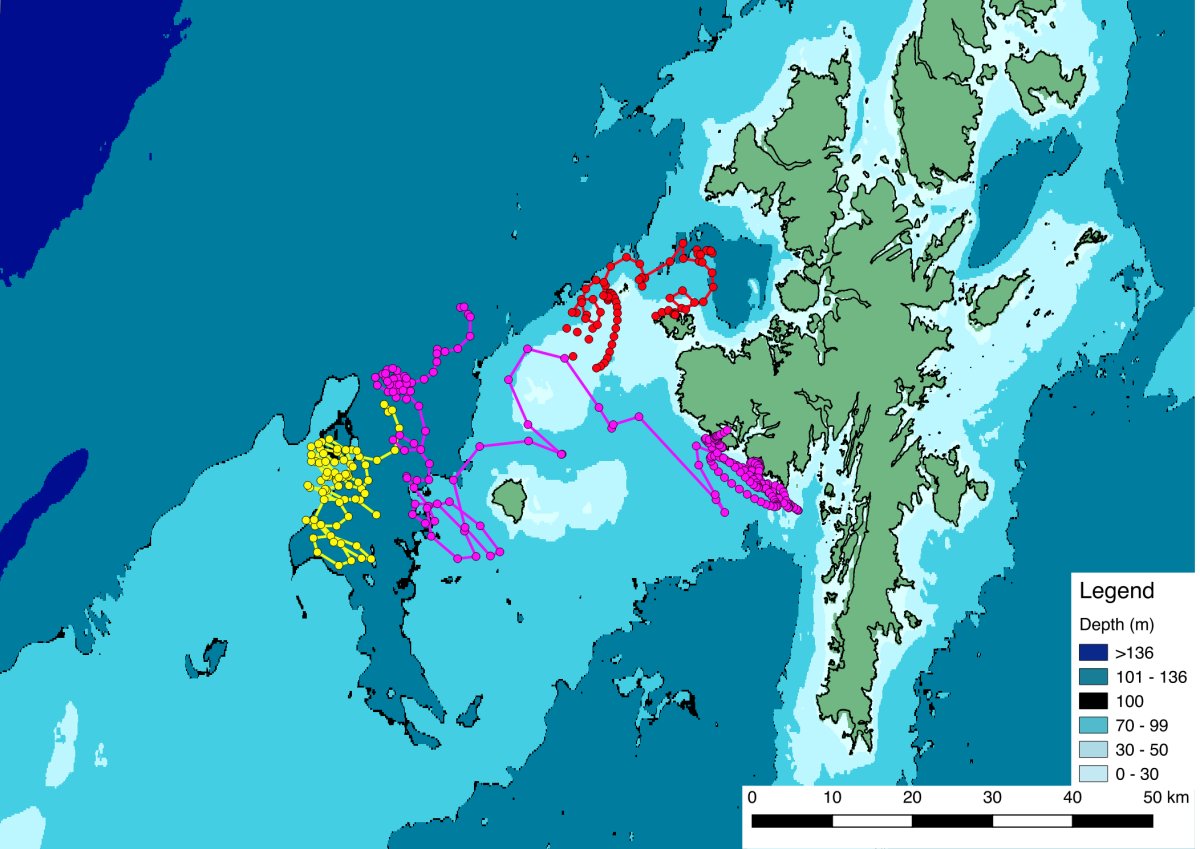Algal Bloom Research Drifters Update
The three drifters released west of Shetland by the NAFC Marine Centre UHI as part of a study of algal blooms have all ended their missions.

The three drifters were released as part of ongoing research being carried out by Paul Dees, a UHI PhD student funded by the European Social Fund, to try to improve the prediction of harmful algal blooms around Shetland.
As previously reported, the drifters were released on the 31st of May to the west of St Magnus Bay at varying distances offshore around the 100 metre depth contour. Each drifter comprises a buoy with an attached 10 metre long drogue and transmits its position at regular intervals. Over the first week (to 8th June) the drifters generally moved south and west (see here for a map of their previous drift).
Contact was unfortunately lost with one drifter (yellow on the attached map) more than a week ago when it ran out of battery power. Its last reported position was south-west of Foula.
Since then the other two drifters have generally been carried back to the north and east under the influence of strong south-westerly winds.
The drifter that had been deployed closest to shore (red on the map), and which had previosly drifted around Papa Stour, eventually ran aground on the island. Thanks to Jane Puckey and Andy Holt who live on Papa Stour we know that the drifter made it to within 5 metres of the shore in Dommie Geo at Lamba Ness. However, the strong winds and currents carried it away before it could be retrieved and it has stopped sending a signal, presumably due to damage when it went ashore.
The last difter (purple on the map) travelled a considerable distance. Having initially drifted south to the west of Foula, the strong winds quickly carried it east to close inshore off the West Mainland. When the winds moderated it was carried back and fore along the coast before being picked up near salmon cages off Walls by Ian Anderson and Andrew Deyell of Cooke Aquaculture. Thanks are also due to Lindsay Angus and Michael Tait for their help in retrieving this drifter.
It is planned to release more drifters at the end of June and it is hoped that studying the movement of the drifters will provide information on the currents acting on algae to the west of Shetland. Large blooms of the toxic algae Dinophysis occurred in this area in 2006 and 2013 and were blown inshore by the wind. Preliminary evidence suggests that such algal blooms may tend to form and grow where the water depth reaches around 100 metres.
Anyone finding a drifter is asked to contact the NAFC Marine Centre.
For further information about the project please contact Paul Dees (Paul.Dees@sams.ac.uk , 01595 772000).